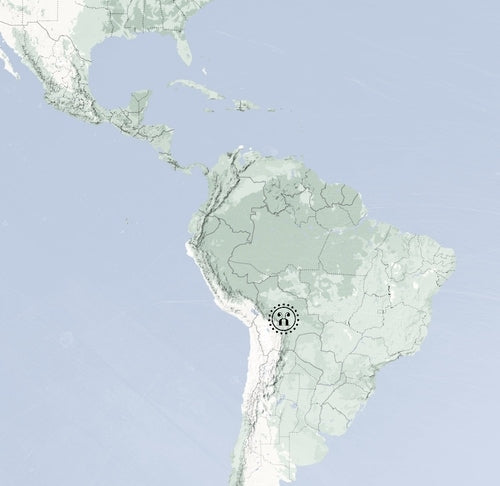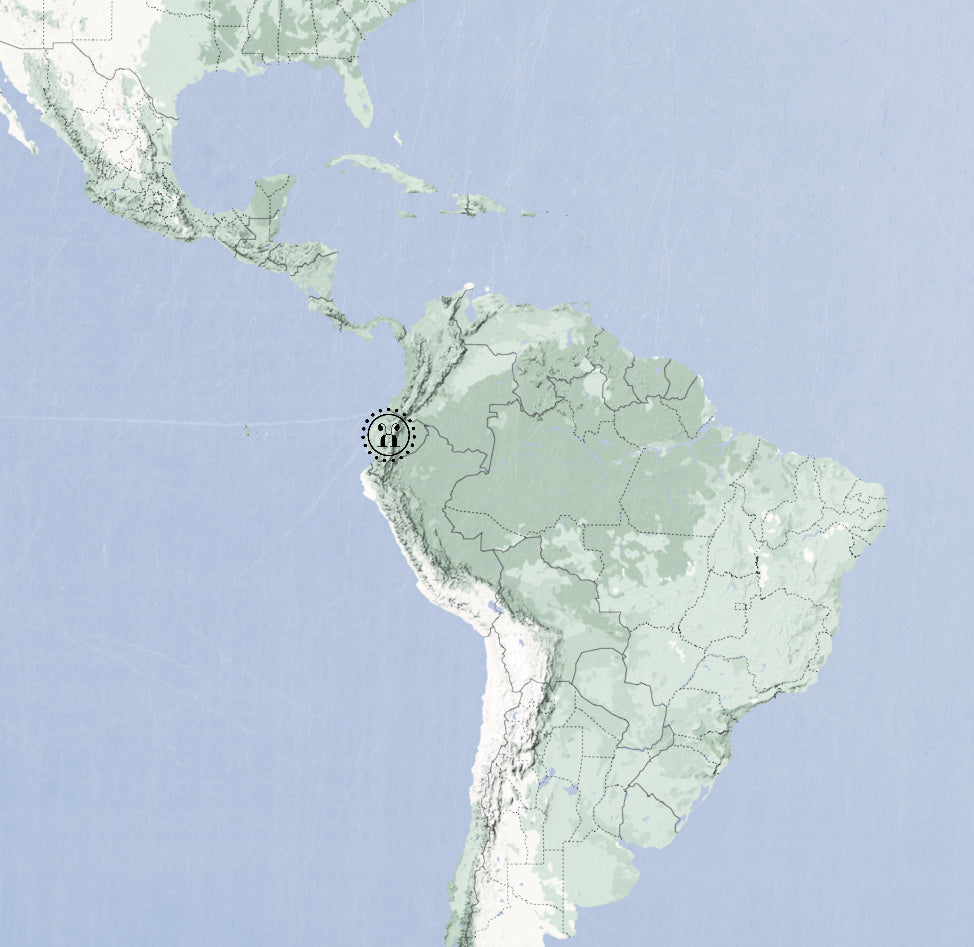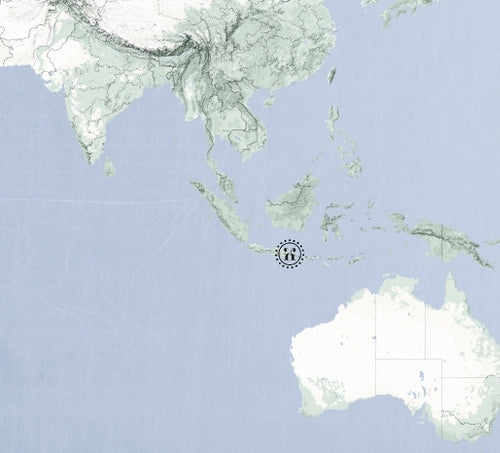THE TASTE IS IN THE ORIGIN
Blood oranges, black tea, tobacco, or vanilla – flavor notes from the trees, rainforests, or rivers of Asia, South America, and the Caribbean are the defining and special characteristics of our "Single Origin" chocolates. As the name suggests, a "Single Origin" chocolate comes from a single plantation or region of origin and is thus shaped by the local conditions. The special notes of the environment are reflected in the cocoa and give these exquisite Grand Cru chocolates an exceptional character.

OUR PARTNER FOR FAIR CHOCOLATE
-
The base of our Grand Cru chocolates, the so-called couverture, is sourced from Max Felchlin AG in Ibach, in the canton of Schwyz. It's a partnership we're proud of: this traditional company places great importance on sustainable and fair trade. Felchlin knows many of its cocoa farmers personally, guaranteeing them long-term partnerships and a secure income. The farmers receive a cocoa price above the usual Fair Trade level, which allows them and their families a good standard of living; this enables their children to attend school. Sustainability is also a top priority for Felchlin in the management of the cocoa plantations: it is always implemented
-
in harmony with nature. Natural resources, such as energy and water, are conserved as much as possible during the transport and processing of the beans, and the various processing processes in the factory in Schwyz are constantly being improved.
Since 2022, we have had a new partner for our Grand Cru chocolates alongside Felchlin: Original Beans. Original Beans is committed to sustainable and fair cocoa farming and works with cocoa farmers to reforest the forests in cocoa-growing regions. With this regenerative approach, they have already helped to grow more than 2 million trees.
-
Read more
The base of our Grand Cru chocolates, the so-called couverture, is sourced from Max Felchlin AG in Ibach, in the canton of Schwyz. It's a partnership we're proud of: this traditional company places great importance on sustainable and fair trade. Felchlin knows many of its cocoa farmers personally, guaranteeing them long-term partnerships and a secure income. The farmers receive a cocoa price above the usual Fair Trade level, which allows them and their families a good standard of living; this enables their children to attend school. Sustainability is also a top priority for Felchlin in the management of the cocoa plantations: it is always implemented
Production takes place in harmony with nature. Natural resources, such as energy and water, are conserved as much as possible during the transport and processing of the beans, and the various processing methods at the factory in Schwyz are constantly being improved. Since 2022, we have had a new partner for our Grand Cru chocolates in Original Beans, alongside Felchlin. Original Beans is committed to sustainable and fair cocoa farming and reforests the forests in cocoa-growing regions together with the cocoa farmers. With this regenerative approach, they have already been able to grow more than 2 million trees.

HOW COCOA GETTS TO SWITZERLAND
-
Cacao grows in warmer and subtropical regions of South America, West Africa, Asia, and the Caribbean; cacao trees thrive in warmth, rain, and shade. The tree only begins to bear fruit after five to six years, reaching its full splendor at around twelve years of age. The cacao pods grow directly on the trunk and can be harvested four times a year. During harvesting, cacao farmers carefully separate the ripe pods from the trunk using a sharp knife. The pod is gently opened with a knife, and the seeds and pulp are removed from the husk. The seeds and pulp are then placed in a large wooden box or on [unclear - possibly a tray or surface] to ferment.
-
the forest floor, where they are covered with large leaves. After fermentation, the beans are laid out in the sun to dry and sorted by size and quality. They are then shipped to Switzerland in large containers, either in jute or special plastic bags. Here, the fresh cocoa beans undergo many different processing steps (cleaning, roasting, cracking, grinding, kneading, and rolling) until they finally experience the comforting warmth of the conche. Hours of agitation and aeration give the beans their unique aromas and flavors, which is what makes the exquisite Grand Cru chocolates so special.
-
Read more
Cacao grows in warmer and subtropical regions of South America, West Africa, Asia, and the Caribbean; cacao trees thrive in warmth, rain, and shade. The tree only begins to bear fruit after five to six years, reaching its full splendor at around twelve years of age. The cacao pods grow directly on the trunk and can be harvested four times a year. During harvesting, cacao farmers carefully separate the ripe pods from the trunk using a sharp knife. The pod is gently opened with a knife, and the seeds and pulp are removed from the husk. The seeds and pulp are then placed in a large wooden box or on [unclear - possibly a tray or surface] to ferment.
the forest floor, where they are covered with large leaves. After fermentation, the beans are laid out in the sun to dry and sorted by size and quality. They are then shipped to Switzerland in large containers, either in jute or special plastic bags. Here, the fresh cocoa beans undergo many different processing steps (cleaning, roasting, cracking, grinding, kneading, and rolling) until they finally experience the comforting warmth of the conche. Hours of agitation and aeration give the beans their unique aromas and flavors, which is what makes the exquisite Grand Cru chocolates so special.
Discover the origin of our cocoa
Bolivia
Kolumbien
Peru
Dominican Republic
Costa Rica
Madagascar
Venezuela
Java, Indonesia
Ecuador
Kongo
Milk chocolate
Couverture Bolivia 45%
Herkunft Beni, Bolivia (Bolivian Amazon)
Kakaointensität 8/10

Dark chocolate
Couverture Bolivia 68%
Herkunft Beni, Bolivia (Bolivian Amazon)
Kakaointensität 8/10
Dunkle Schokolade
Arhuaco 82%
Dunkle Schokolade
Cusco 100%
Dark chocolate
Elvesia 74%
Herkunft Elvesia, Samana Peninsula, Dominican Republic
Kakaointensität 8/10

White chocolate
Opus Blanc Selection 35% - Chocolat maison
Herkunft Dominican Republic (cocoa butter)
Kakaointensität 7/10
Dunkle Schokolade
Couverture Costa Rica 70%
Dark chocolate
Couverture Madagascar 68%
Herkunft Sambirano, Madagascar
Kakaointensität 6/10

Milk chocolate
Maracaibo Creole 49%
Herkunft Sur le Lago, Maracaibo, Venezuela
Kakaointensität 6/10

Dark chocolate
Java 64%
Herkunft Dark Chocolate Java 64% Dark Grand Cru Chocolate from Jember in Indonesia. Origin Cocoa intensity Jember (southeast of Surabaya), East Java Highland, Indonesia
Kakaointensität 8/10

Dark chocolate
Esmeralda's Dark 65%
Herkunft Ecuador
Kakaointensität 8/10

Milk chocolate
Couverture Rio Huimbi 42%
Herkunft Rio Huimbi, Esmeraldas, Ecuador
Kakaointensität 7/10
Dunkle Schokolade
VIRUNGA 70%
Milk chocolate
Couverture Bolivia 45%
Herkunft Beni, Bolivia (Bolivian Amazon)
Kakaointensität 8/10



